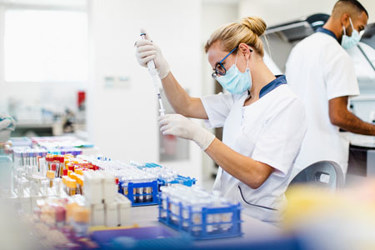Cell Line Development For Bispecific Antibodies: Better Predictability Through Transposases
By Sowmya Rajendran, Indira Kottaiyl, Lynn Webster, Divya Vavilala, Molly Hunter, Monica Konar, Surya Karunakaran, Mario Pereira, Jeffrey Johnson, Jeremy Minshull, Ferenc Boldog

Bispecific antibodies are a major focus in biopharmaceutical drug development. Designing these complex molecules is challenging due to the variety of possible structures and the need to predict the correct expression ratios of their individual subunits for successful combination (heterodimerization).
This white paper shows that the Leap-In transposon platform, a new method for developing cell lines (Rajendran et al. 2021), can also be used to create cell lines that produce bispecific monoclonal antibodies. The main findings are:
- Parental pools (groups of cells) accurately predict the productivity and heterodimer fractions of the individual clones (single cells) derived from them.
- Clones remain stable in their productivity and heterodimer fraction for at least 60 cell divisions.
- The stability of productivity in stable cell pools can vary depending on the product’s specific physical and chemical properties.
- Heterodimer fractions in Leap-In stable pools remain stable regardless of the pools’ productivity stability.
- The optimal bispecific antibody structure and subunit ratios can be selected and tested efficiently at the stable pool stage.
- Because the productivity of clones is consistently high, only a small number of clones (around 50) need to be isolated and characterized.
Get unlimited access to:
Enter your credentials below to log in. Not yet a member of Bioprocess Online? Subscribe today.
